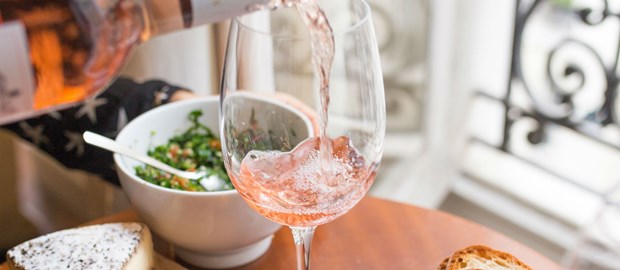
Rosé all day: who is drinking all the pink wine?
We’ve known for quite some time that rosé wine is the drink of the summer months. According to Kantar Media TGI data, 7.5m adults in Great Britain drink rosé wine (15% of the population) – still fewer than red (24%) and white (27%), but still growing in popularity amongst certain segments. Although sales growth is now levelling off after some phenomenal increases in recent years, rosé is still a £591m market (Kantar Worldpanel, 52w/e 17 Jun 18) – and that number only looks at rosé consumed at home. So who is drinking it, and where?
Who is drinking rosé?
Kantar Worldpanel data finds that rosé attracts a younger consumer than other types of wine, with 38% being aged under 35 (just 24% of those who consume any types of wine are under 35). It may help that pink has been labelled the colour of millennials; it doesn’t hurt that rosé doesn’t need to age, making it more affordable and also pretty easy on the tongue.
Rosé drinkers are still more likely to be female, according to Kantar Media. They are 32% more likely to be female than the average adult, whilst white drinkers are 16% more likely than the average to be female and red wine drinkers 8% less likely than the average to be female.
Reflecting this female bias, but also indicative of their keenness to always look good and be noticed, rosé drinkers are also 46% more likely than the average adult to agree that ‘wearing make-up makes me more self-confident.’ They are also 32% more likely to agree that they like it when their nails attract attention – versus no more likely than average for white wine drinkers, and 23% less likely than average for red wine drinkers. (Kantar Media TGI)
A ‘gateway’ wine for many young people, rosé drinkers are 31% more likely than the average adult to agree they ‘like to go to trendy places to eat and drink’, according to Kantar Media. That number is 6% for red wine drinkers and 9% for white wine drinkers.
Rosé drinkers are also more likely to drink white than red when they are not drinking rosé – two thirds drink white and only 47% drink red. They still consider themselves adventurous types: they are a third more likely than the average adult to say they ‘like to try new drinks’, while red and white wine drinkers are just 12% more likely.
Where are consumers enjoying rosé?
While most wine is enjoyed at home, with a total of 17.5% of total wine serves being elsewhere, a quarter of all rosé wine servings are out of the home, as the drink’s popularity is driven by social occasions. 14% of all rosé serves are while clubbing or on a date, according to Kantar Worldpanel.